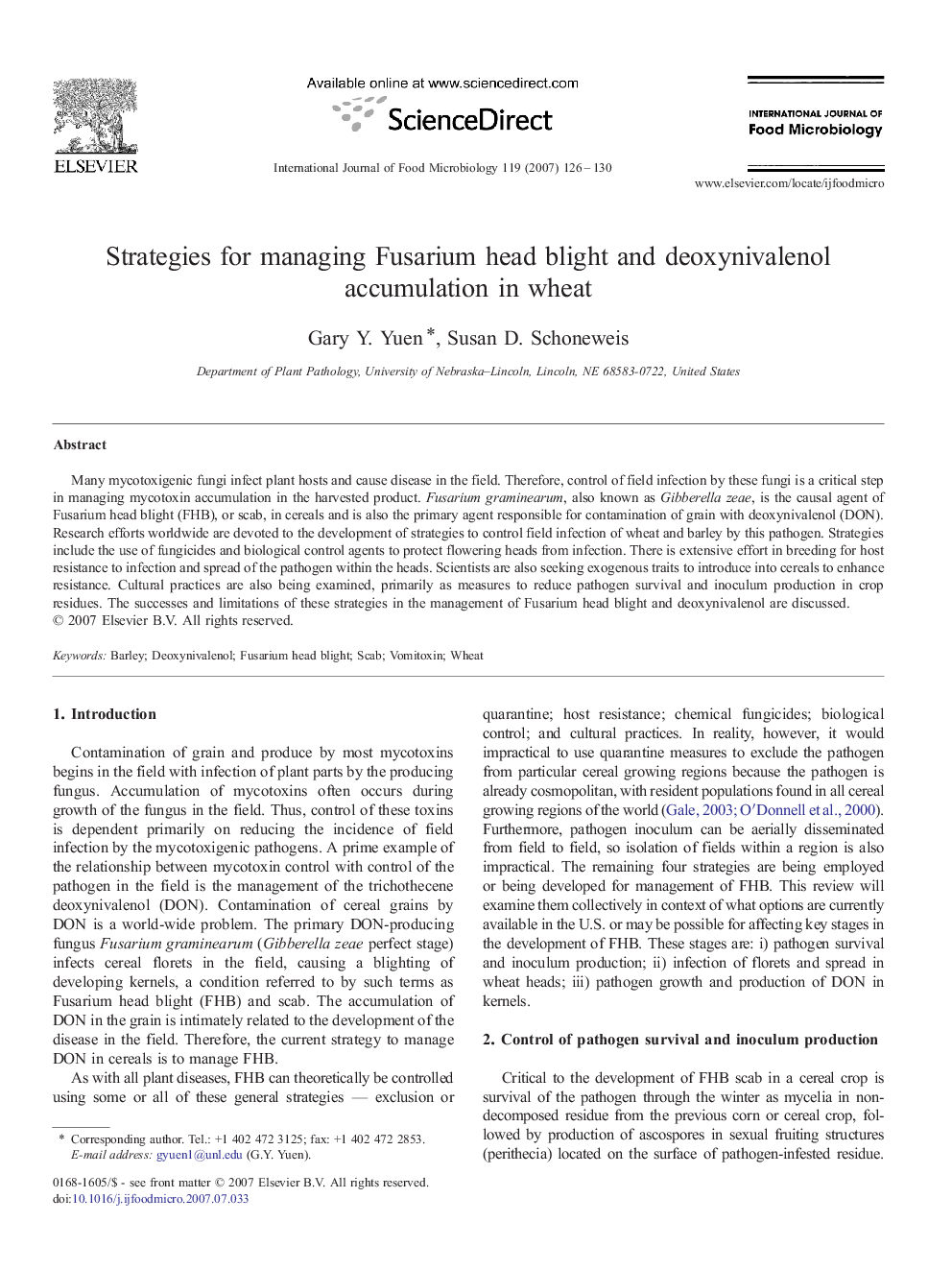| کد مقاله | کد نشریه | سال انتشار | مقاله انگلیسی | نسخه تمام متن |
|---|---|---|---|---|
| 4369336 | 1616738 | 2007 | 5 صفحه PDF | دانلود رایگان |

Many mycotoxigenic fungi infect plant hosts and cause disease in the field. Therefore, control of field infection by these fungi is a critical step in managing mycotoxin accumulation in the harvested product. Fusarium graminearum, also known as Gibberella zeae, is the causal agent of Fusarium head blight (FHB), or scab, in cereals and is also the primary agent responsible for contamination of grain with deoxynivalenol (DON). Research efforts worldwide are devoted to the development of strategies to control field infection of wheat and barley by this pathogen. Strategies include the use of fungicides and biological control agents to protect flowering heads from infection. There is extensive effort in breeding for host resistance to infection and spread of the pathogen within the heads. Scientists are also seeking exogenous traits to introduce into cereals to enhance resistance. Cultural practices are also being examined, primarily as measures to reduce pathogen survival and inoculum production in crop residues. The successes and limitations of these strategies in the management of Fusarium head blight and deoxynivalenol are discussed.
Journal: International Journal of Food Microbiology - Volume 119, Issues 1–2, 20 October 2007, Pages 126–130